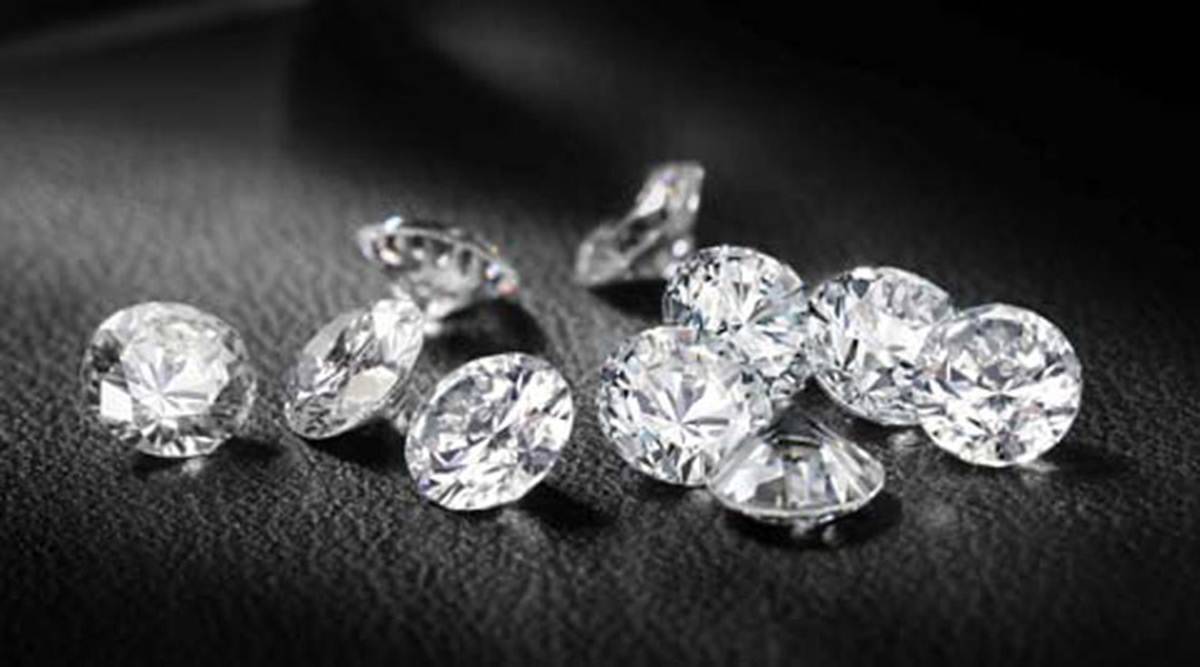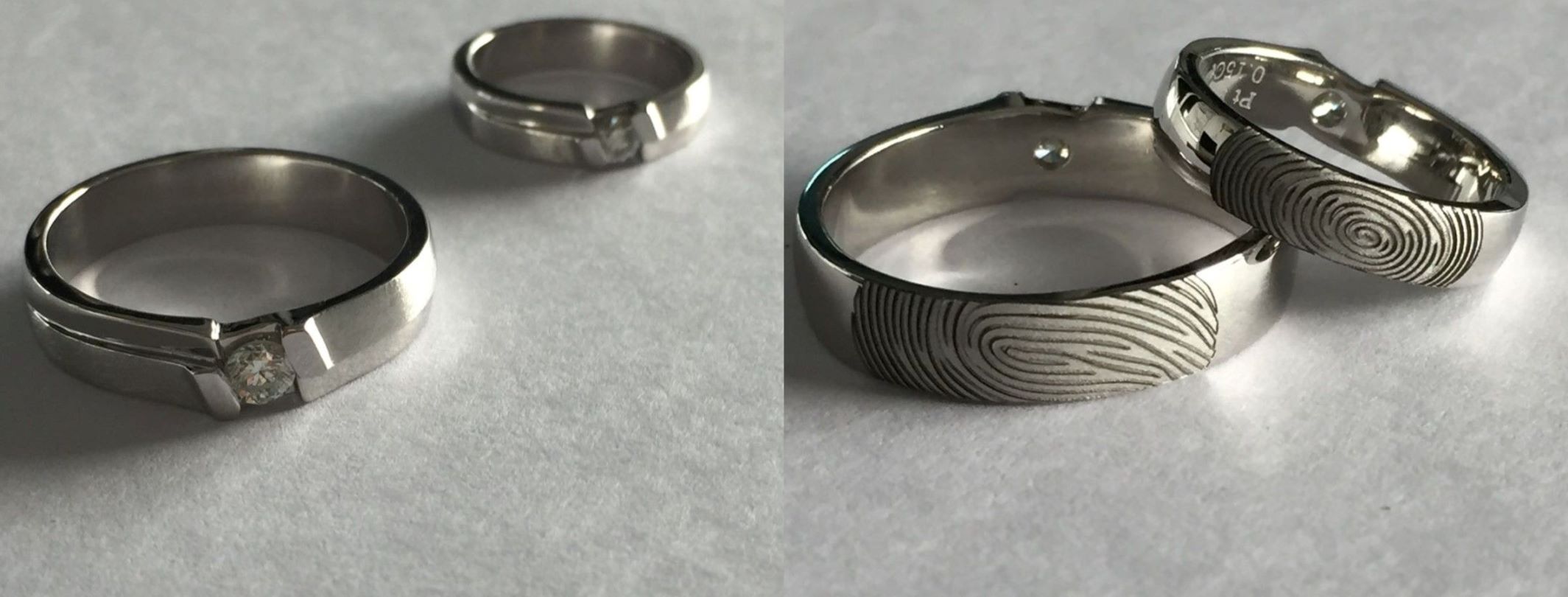An Ultimate Guide For VVS Diamond December 2, 2021 – Posted in: Blog
Cut, colour, carat, and clarity (commonly known as the 4C’s) are used to grade and appraise diamonds all around the world. Cut determines fire and brilliance, and carat determines weight, while clarity refers to the attributes of a diamond’s clarity. The amount of scratches, imperfections, or pieces of mineral deposits on the surface of or within a diamond determines its clarity grade.
VVS diamonds are recognized to be one of the best clarity grades of diamonds, but what are VVS diamonds exactly?
THE FUNDAMENTALS OF VVS DIAMONDS
VVS diamonds, or very very slightly included diamonds, have minute inclusions that are not visible to the naked eye. These inclusions are so minute that even at 10x magnification, they are difficult to spot. VVS diamonds are usually divided into two subcategories: VVS1 and VVS2. The location of the inclusions determines the distinctions between these two subcategories, which are imperceptible to the naked sight.
Inclusions in VVS1 diamonds are closer to the stone’s edge, whereas inclusions in VVS2 diamonds are closer to the centre. VVS1 diamonds are somewhat higher on the clarity scale than VVS2 diamonds because VVS1 inclusions are more difficult to notice from a face-up view.
WHY SHOULD YOU PURCHASE VVS DIAMONDS?
Only Diamond professionals with magnifying tools will be able to determine the difference between these two grades, even though they are both graded under flawless. VVS diamonds look to be flawless to the human eye, however, they are far less expensive than a truly flawless diamond. This means that clients buying diamond couple rings will have the appearance of a flawless stone without the price tag that comes with it. Furthermore, perfect diamonds are extremely rare, so even if you have the financial means to purchase one, you may not be able to find one that fulfils your carat, colour, and cut specifications.
As a result, VVS diamonds are frequently the first option for buyers looking for a cosmetically flawless diamond.
VVS diamonds are not only attractive but also wise investments. Diamonds with a clarity grade of VVS2 or higher are more likely to gain in value fast over time than those with a lower clarity grade.
Also Read :- Make Your Eyes Pop With The Matching Gemstone Jewellery
VVS CLARITY VS. VS CLARITY
The next grade after VVS is VS clarity. The quantity and size of inclusions are the primary differences between the two. A VS diamond will have more faults, but the size of these inclusions makes the biggest difference in terms of visibility – VVS diamonds have smaller flaws than VS diamonds. To put things in perspective, keep in mind that we’re talking about differences that can be determined with a microscope. Choose the stone that gives you the best value if you can’t tell the difference in look with your naked eye. Last but not least, don’t forget to think about the stone’s cut and colour.
No matter how clear a diamond is, if the cut is poor and the light entering the stone leaks out, the brilliance will be drastically reduced.
If a diamond’s colour is poor, even the cleanest stone can appear duller than a practically colourless diamond with more obvious inclusions.
EXPERTS UTILISE FOUR VARIABLES TO CLASSIFY DIAMOND GRADE
Russia, Botswana, Congo, Australia, Canada, and South Africa are the world’s top diamond producers. The four rules that experts use to classify diamond grade are as follows:
- The Diamond’s Colour
Diamonds come in a variety of colours, resulting in a wide range of prices. Diamonds come in two colour tones:
Tones of white (colourless)
Tones of yellow (near colourless).
There are also uncommon colour kinds, such as pink and blue, that can be prohibitively expensive. Red diamonds are the world’s rarest and most costly gems. The white diamond, on the other hand, is more popular than the other colour categories and it is best suited for wedding engagement rings.
- The Diamond’s Size
The price of a diamond is determined by its carat weight. Small diamonds wedding rings
are more common than large diamonds. A 1-carat diamond, for example, weighs the same as four 0.25-carat diamonds, but one larger diamond is worth far more than four smaller ones.
- The Diamond’s Cut Quality
When a wedding diamond ring is flawlessly completed, it indicates that the artisan has a high level of ability and attention to detail. By three optical effects: brightness (white light reflections), fire (colour flashes), and scintillation, a flawless diamond should be bright, colourful, and sparkling (areas of light and dark).
- The Diamond’s Clarity Grade
The purity of the gemstone determines the clarity grade. The Gemological Institute of America’s Richard T. Liddicoat established a gemstone category system in 1953. (GIA). Since then, the following grades have been used:
THE CLARITY GRADING SYSTEM
The clarity of a diamond is gauged using the differentiators below. With clarity, the types of diamonds are gauged depending on the quantity and visibility of flaws.
Flawless (FL): A skilled grader using 10 magnification sees no imperfections or defects.
Internally Flawless (IF): A good grader using 10 magnification can see no inclusions and only flaws.
VVS1 and VVS2 (Very, Very Slightly Included) – Inclusions are difficult to spot under 10 magnification for a professional grader.
Very Slightly Included (VS1 and VS2) – Minor inclusions that a good grader may see under 10x magnification range from difficult to reasonably easy.
Slightly Included (SI1 and SI2) – Inclusions visible under 10x magnification to a good grader.
Inclusions (I1, I2, and I3) are visible under 10 magnifications and can influence transparency and brightness.
Also Read :- What Does The Diamond Shape Say About You?
VVS1 DIAMONDS: WHAT ARE THEY?
A VVS1 diamond is the most similar to an IF (internally flawless) stone. Even a qualified expert will be unable to detect any defects or inclusions under a 10X magnification at this level. When grading a stone, a grader will look at a variety of factors. They will start by looking at the size of the inclusions. The inclusion will be classified lower than a VVS1 if it can be seen under a 10x magnification, for example. If the inclusion is large enough to be visible with the naked eye, it will be graded lower, and so on.
The placement of the inclusion will also be taken into account by the grader. Near the table, inclusions will be much more evident than those in the crown and pavilion. The colour intensity of the inclusions is also taken into account; inclusions can range in colour from barely visible to black.
VVS1 diamonds have no visible flaws or imperfections to the naked eye.
VVS2 DIAMONDS: WHAT ARE THEY?
VVS2 diamonds are the second level of the VVS classification system. They are evaluated and scrutinised in the same way that a VVS1 diamond is, with the number of inclusions, their location, size, and colour all being considered. The placement of the inclusions differs significantly between VVS1 and VVS2 stones. When examined under a 10x magnification, a VVS2 stone will have inclusions visible from the crown. Inclusions in a VVS1 or VVS2 stone will not be apparent to the naked eye, making it hard to discern them without magnification.
AuGrav (Au-Gold, Grav-To Etch, to Engrave) Strongly believes that any Jewel should be a natural extension of yourself. It could be as simple as your Names, your Fingerprints, your Voice Waves, or anything that describes your Persona. To create a piece that will be worn by only 1 out of 7 billion people on earth, Get In Touch with us. Our Jewelry experts have all ears to listen to your story and suggest creating a masterpiece.
You May Also Like















